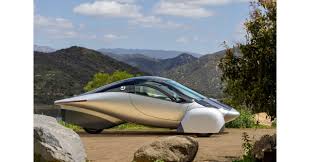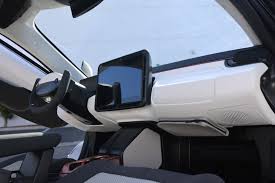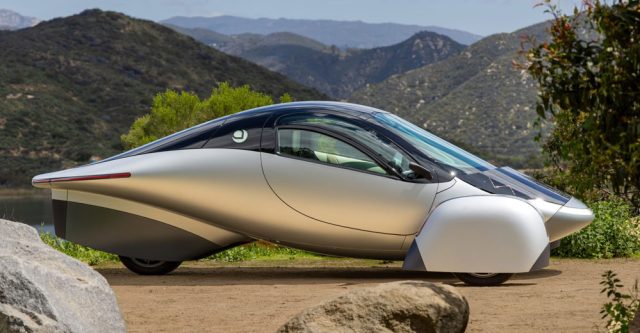A near-production model of a solar-powered car will be on display at CES 2025.
Aptera Motors said that a “production intent” version of its eponymously-named solar powered vehicle will appear at the giant consumer electronics show running January 7-10 in Las Vegas.

At least, if the company is to be believed, the Aptera boasts an estimated 40 miles a day of solar-powered driving, a three-wheel futuristic design, and unparalleled energy efficiency, able to plug in for up to 400 miles on a single charge in under an hour.
Announcement of a production-intent model means Aptera has a vehicle that should comply with regulatory requirements and should be at a level where the design is viable for manufacturing, hitting performance, safety, and manufacturing requirements,” Rob Enderle, president and principal analyst at the Enderle Group, an advisory services firm, in Bend, Ore., told TechNewsWorld.
Aptera is being watched with a great deal of interest by many in the automotive industry,” said Edward Sanchez, a senior analyst in the automotive practice at Tech Insights, a global technology intelligence company.
“It is a radical departure from most mainstream cars,” he told TechNewsWorld. “There’s a big question of demand and mainstream appeal for such an unconventional design”.


Other classes also borrow some of the manufacturing techniques which have until now been used mainly in the supercar and motorsport sectors, he added.
The company is targeting a competitive price point for its vehicle, so it will be interesting to see how these specialized techniques and materials will scale for what’s intended to be a quasi-mass-market vehicle-from a volume standpoint-and if the company can maintain competitive operating margins over the longer term.
Demo Under Scrutiny
Mark N. Vena, president and principal analyst at SmartTech Research, a consulting and research firm in Las Vegas, suggested that the scrutiny for Aptera’s demo would be high. “The unveiling of a production-intent vehicle means that Aptera has moved beyond prototyping and to a car that will actually see large-scale production-a major development milestone, in many ways,” he told Tech News World.

“This step demonstrates the company’s confidence in the vehicle’s design, functionality, and manufacturability, aligning with industry standards and regulatory requirements,” he continued. “It also helps build consumer and investor trust by showcasing a tangible product that is nearing market readiness, setting the stage for final testing, production scaling, and eventual delivery. I’m not optimistic.”
But that pessimism isn’t shared by the early adopters who have paid $1.7 billion to preorder 50,000 units of the vehicle.
“CES is the perfect stage for unveiling the future of sustainable transportation,” Aptera Co-CEO Chris Anthony said in a statement.
The result of several years of innovation and engineering, our production-intent vehicle is a real-world solution to reducing carbon emissions and revolutionizes the thinking about energy-efficient mobility. We couldn’t be prouder to finally show the world that Aptera will soon hit the roads everywhere for cleaner, sustainable tomorrows.
To secure that future, though will require surmounting some significant challenges. “Generally, there just isn’t enough surface area on a car for the current solar panel technology to do more than just run HVAC to keep the car cool,” Enderle explained. “Recharging the massive batteries in most EVs would take days to weeks to recharge using panels on a car.”

Power Problem
Ben Zientara, a solar policy and industry expert at SolarReviews, a reviews and advice website, said there’s simply no way to power the kind of vehicle people want to drive with solar cells embedded in a car’s surface.
“Even the most efficient solar cells can provide only a few miles of additional range per day, even if parked in the sunniest spot in the sunniest state,” he told TechNewsWorld. The average electric vehicle can only get about 3.5 miles of range with one kilowatt-hour of electricity. A car can have solar cells on it that generate perhaps three to four kWh per day, which translates to 10 to 14 miles per day with nothing but the sun.
He said that prior attempts at solar-powered EVs by Sono Sion and Lightyear One had solar cells peaking at about 1.2 kilowatts of power under full sun. “This means the car would have to be perfectly clean and parked in the ideal location on a very sunny day for several hours to get the maximum 14 miles per day range,” he said.
“I don’t see a huge opportunity unless we see meaningful progress with the technology and the cost that would enable them to compete with existing vehicles today, including electric vehicles and those with internal combustion engines,” added Seth Goldstein, an equity strategist and chairman of the electric vehicle committee at Chicago-based Morningstar Research Services.
He explained that Aptera is targeting 40 miles for an all-solar range, after which the vehicle becomes an electric car with a battery. “I just don’t see consumers really being willing to pay extra for 40 miles of solar-powered driving.”
Vagaries of Solar Power
Even assuming the surface-to-power problem is resolved, there are other vagaries of solar power. “Cars are subjected to weather conditions, falling leaves, bird poop and other debris that causes loss of power output from solar cells,” Zientara said.
He further said that perfectly orienting a car’s surface with solar cells to the sun is almost impossible. “To get the most from solar cells, they must be angled exactly perpendicular to incoming sunlight,” he said. “A car has many, many different surfaces, all of which are angled in different directions. If you maximize the orientation of one surface, the others are not pointed directly at the sun.
Then there’s the sun moving in the sky problem. “Even if you can point one or more of a vehicle’s faces directly at the sun, they won’t stay that way for very long,” Zientara noted. “And the sun also changes throughout the year, shining down more directly on the northern hemisphere in the summer and much less directly in the winter. Solar batteries on a car’s surface would, therefore, generate more energy in summer and less in winter, irrespective of the weather.

Solar-powered cars could find niche markets. “Solar-powered vehicles could be sufficient for those applications where extensive travel in sunny areas can maximize energy generation, such as rural or remote regions with scarce charging infrastructure,” said Vena. “They would be quite fit for low-speed, short-distance transport, such as delivery services, campus shuttles, or recreational vehicles, where the energy demand is lower.
Solar-powered vehicles can also be used as backup power sources or sustainable alternatives for off-grid living, contributing to energy independence and reduced carbon footprints,” he added.
“They won’t be viable for most people,” Enderle said, “but for those that can, or need to use them for living off the grid or because they have no viable charging alternatives, they could be a godsend.

























